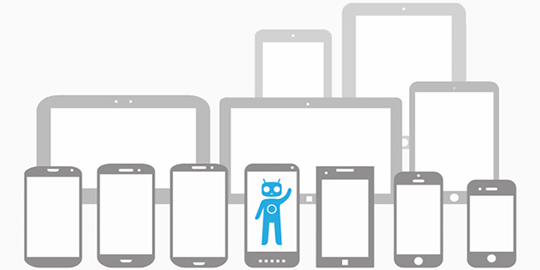
Technology Observatory September 29–October 5
This week's Technology Observatory brings you the following stories:
● Microsoft confirms plans to open a store on New York's Fifth Avenue
● ZTE confirms its commitment to Spain with the launch of a new online store on October 1
● Presenting the Motorola Nexus 6
● Blackberry already working on Passport 2 following the recent launch of the first version
● Windows 10
● Telefónica becomes Europe's second largest operator with the acquisition of E-Plus
● Cyanogen turns down Google's buyout offer
Microsoft has spent years creating a network of more than 100 retail stores across the United States and Canada, but it still doesn't have a flagship to attract public attention and pull in consumers. Now all of that is about to change. Redmond has confirmed to the Wall Street Journal that it plans to open a Microsoft store on New York's Fifth Avenue, no less. Apparently, the New York store won't be just another one in the chain but a special outlet to show off the Microsoft experience afforded by the company's hardware and related services. According to David Porter, the Microsoft vice president in charge of retail stores, the idea is not a new one but has been a company goal ever since the first Microsoft stores opened in 2009. It seems they were just waiting for the right location and now they've found it. Although there's still no date for the opening, the store will be located at 677 Fifth Avenue, just a stone's throw from the MoMA and major establishments by other brands. For example, Apple's legendary glass square is only five blocks away.

ZTE, a smartphone manufacturer and telecommunications multinational currently undergoing rapid worldwide expansion, is to open an online store for Spanish users. The move reflects the company's desire to engage more closely with the public by opening a new channel to sell its smartphones, following the excellent results obtained through other companies like The Phone House and Media Markt.
“ZTE has grown its business year after year, in both the networks and terminals divisions. In the latter area in particular we have been particularly active in recent months with the launch of proprietary models like the ZTE Blade L2 and the ZTE Blade VEC 4G, which offer excellent value for money," said Gonzalo Eguiluz, Director of Terminals for ZTE España.
The first two devices available will be:
● ZTE Blade G Lux: This terminal comes with a 4.5-inch display and an 8-megapixel camera. With a 1.3 GHz dual-core processor and Android Kitkat as the operating system, it will retail at €99.
● ZTE Blade L2: This device has a 1.3 GHz quad-core processor, 1 GB RAM, 4 GB expandable internal memory and an 8-megapixel camera.
But it doesn't end there. ZTE will soon be announcing a range of official accessories as well as several new smartphones, including the ZTE Blade VEC 4G, a device more powerful than the aforementioned ones. The store for Spanish users will open on October 1 and to celebrate the launch anyone who buys a product within the first 24 hours will have VAT and shipping costs waived. A great opportunity if you're thinking of buying a ZTE device. Could this be a strategy to win much more market share in Spain? Time will tell, but it's certainly another example of how more and more low-cost models from Asia are taking Europe by storm and earning increasingly spectacular revenues. It could be that people are beginning to realize that a normal or basic user doesn't need to spend money on a high-end model from one of the big names.
The information that's reached us about the future Nexus couldn't be more specific. According to sources that AP seems to take very seriously, Google's next flagship terminal will be the Motorola Nexus 6, a name supposedly confirmed which therefore quashes all speculation about a Nexus X. The dimensions also seem certain: a 5.9-inch display with a QuadHD 2560 x 1440 pixels and 496 ppi resolution, 3200mAh battery, a design similar to the Moto X with an aluminum back plate, two front-facing speakers, plus a 13-megapixel camera and a 2-megapixel front-facing one. They say it charges in just 15 minutes, like the Moto X, although for the moment there's no word on wireless charging. The more curious details refer to these icons: in addition to Android L, the call function, Google, the messaging app and Play Store have all been revamped. There's also a new Drive folder, and of course a time app. Android 5.0 Lollipop? Let's forget the 5.2-inch version. Unless we're in for a huge surprise, the Motorola Shamu Nexus 6 is the only thing we're getting. Interestingly, though, this might mean a reduction in the price of the Nexus 5 to ensure it remains competitive in the five-inch segment. Long live phablets, or at least that's what Google seems to want.
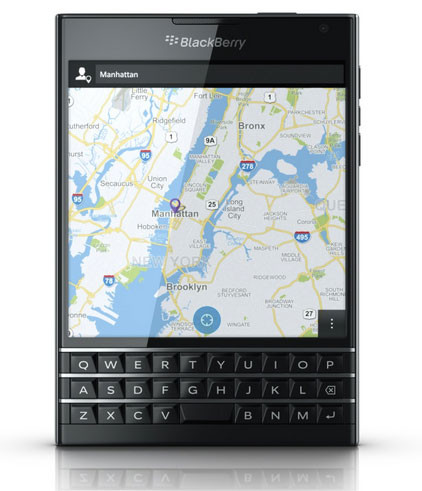
So, the new Passport has just reached the market and Blackberry has no other thought on its mind than to think about its successor: Blackberry Passport 2, a model that theoretically won't be released until well into 2015 (at the very least) but about which the company has already made an announcement. CEO John Chen has confirmed that they will be unveiling a prototype of Passport 2 at MWC 2015 in Barcelona (March 2–5), although it will be more about the design and image of the new product than the technical specs as there'll still be plenty of time to fine-tune those details. Before Passport 2, Blackberry will be launching the Q20 Classic, which they hope will boost sales. A return to the company's more traditional and successful models, with a physical keyboard, this is likely to be released by the end of this year. The company's latest financial results are not good but they do point to a more prosperous future, and in time and with good work (things like Passport with Amazon AppStore preinstalled) they might well take off again and recover some of their former glory.
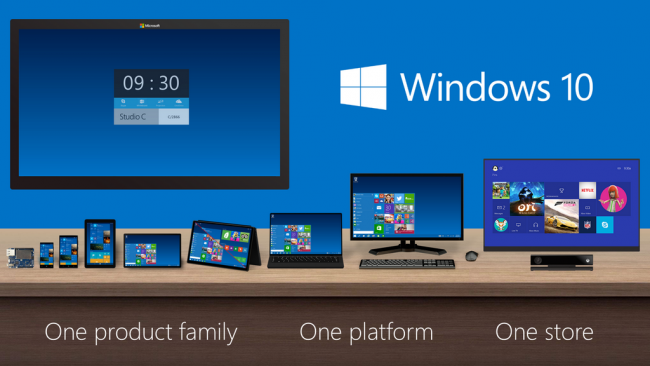
Microsoft's latest version of its operating system leaps from Windows 8.1 to Windows 10, omitting Windows 9 (and joking about Windows One). It seems the focus of the operating system is to combine the Windows 7 and 9 worlds in a single place. Windows 10 looks set to carve out an even greater presence in all the devices available today, like tablets, laptops, computers, televisions and more. It might even replace Windows Phone.
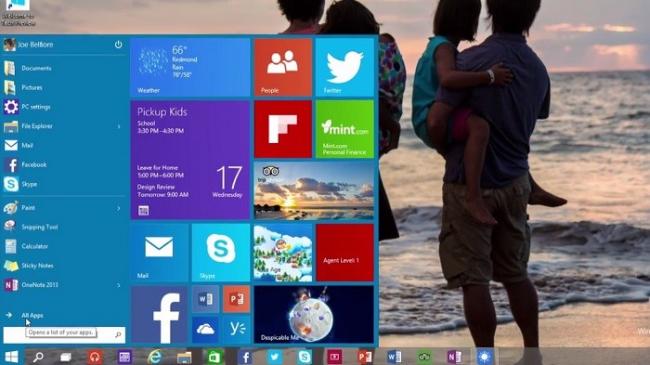
Microsoft now sees the start screen with tiles as a mistake (at least for laptops and desktops) and has relaunched its start menu, which as Belfiore says "gives the familiarity of Windows 7 with some of the elements of Windows 8". The search tool is also located in this menu, and it still performs searches in both the computer and Bing.
A new tool that comes with Windows 10 is Task View, which lets you create multiple desktops in the same session and organize your tasks and applications more neatly. Additionally, in the new version your applications will be fixed on one side of the screen as you switch from one desktop to another in the remaining space. You'll also be able to manage the fixed applications from the other desktops. Users who work with large screens are sure to find this a very practical feature. In addition to the Crtl+V command prompt, Microsoft is still working to improve the experience for users with touchscreens. For example, the Charms option bar will still open when you move your cursor to the right (or swipe from the right), but now you'll also be able to swipe from the left to open Task View. Windows 10 also recognizes whether your computer has a keyboard or not (in the case of hybrids, for example) and loads the appropriate interface accordingly. They've called this feature Continuum. The new operating system that seems to fix the bugs found in Windows 8 will likely be released in the second half of 2015, but there's been talk of more details about Windows 10 being announced at BUILD 2015.
The European Commission has approved Telefoníca's takeover of the German operator E-Plus, a subsidiary of KPN. The move turns the Spanish operator into the second-largest in Europe in terms of volume, with the acquisition adding nearly 47 million customer connections to Telefónica's existing connections in the European market through its various national subsidiaries. E-Plus is one of the leading operators in Germany, with a combined income of close on €8 billion, which makes Telefónica the most important operator in Germany and the second-largest in Europe in terms of number of customers and income. The deal will allow the company to increase its growth rate and cash flow ratio, and sustained performance in this respect may eventually turn it into Europe's leading operator, as far as figures go. Under the terms of the deal, the Spanish operator will maintain a majority stake of 62.1% in Telefónica Deutschland, which now includes 100% of E-Plus, releasing 20.5% to KPN and leaving the rest in the hands of other investors and free float. In this respect, the company has confirmed that the acquisition of E-Plus will generate estimated synergies of €5 billion derived from distribution, customer services and, above all, mobile network integration. This puts the company in the leading spot in two key European countries and makes it one of the largest operators in Latin America, thanks to its operations in Brazil.
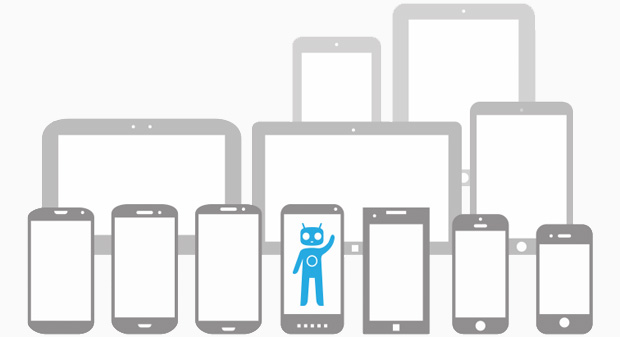
For a lot of startups the prime goal is to sustain sufficient growth to attract the attention of major corporations and sell out to the highest bidder. This is not the case with Cyanogen, which has just turned down a multimillion-dollar buyout offer from Google. According to The Information, Cyanogen CEO Kirt McMaster told shareholders that Google SVP Sundar Pichai had put an offer on the table but that he had refused it. Rather than immediate money for the founders, Cyanogen aspires to become the third most widely used mobile operating system while simultaneously keeping the Android "open". It may be looking for funds from investors to bankroll this ambition, but it's certainly not up for sale, which is a totally different thing. Furthermore, if things go as planned, the company hopes to obtain a $1 billion valuation during the third financing round. As part of its growth process, it seems that Cyanogen has reached an agreement with Micromax to make telephones with a personalized operating system, not unlike what it's already dong with OnePlus One. We have no idea whether the goals of obtaining a $1 billion valuation and becoming the third-largest mobile operating system are overly ambitious or not, but the fact that senior executives turned down easy money from Google certainly shows how committed they are to achieving those goals.
